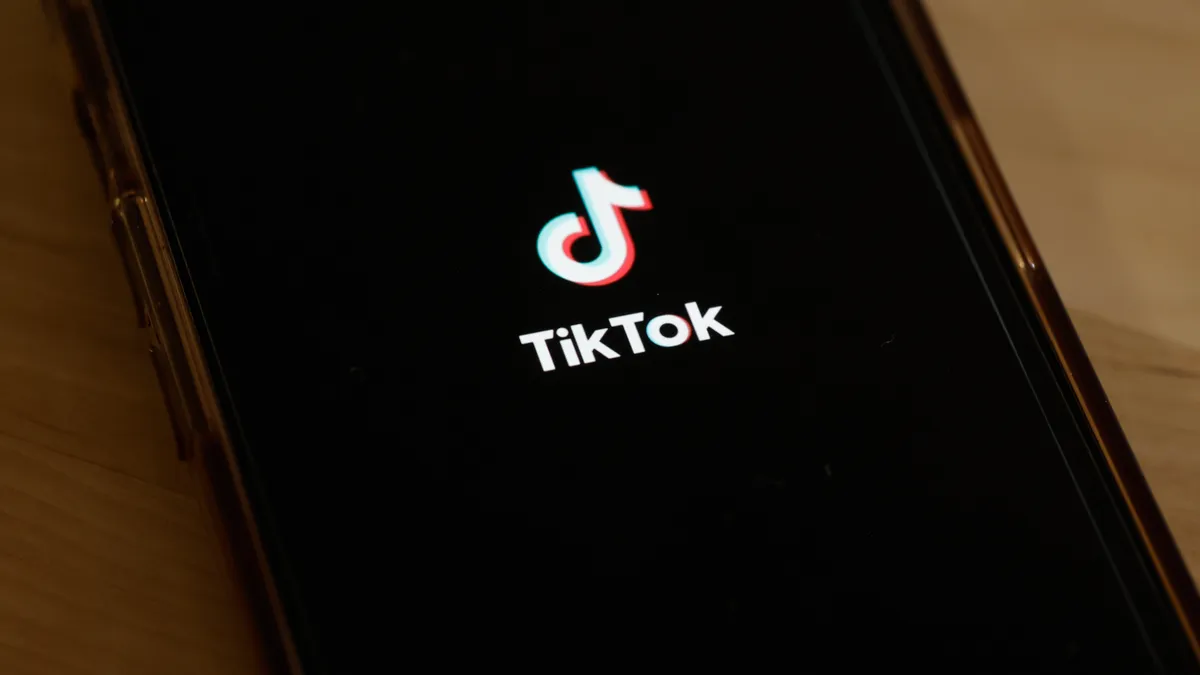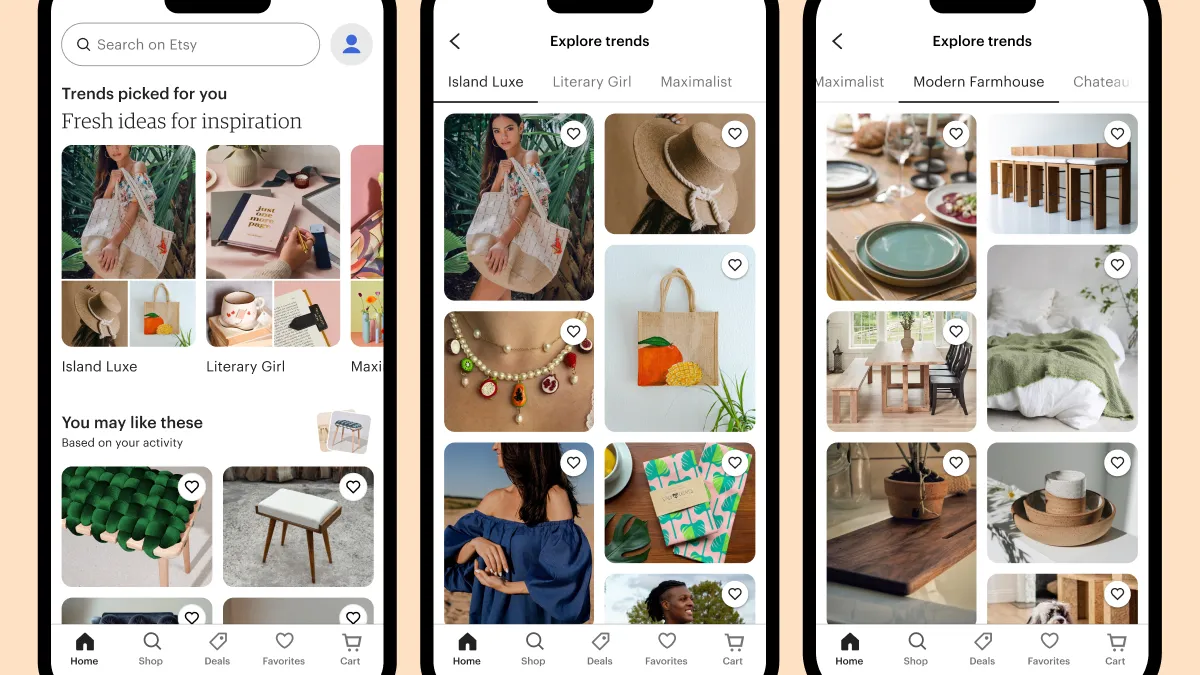If several retailers were in survival mode in 2020, then 2021 had been a year of tech innovation for many.
Retailers learned to keep up with fast-paced, digitally savvy consumers. Eager to gain consumers' attention, they boosted their presence on popular platforms, like Snapchat and TikTok, and adopted new capabilities in a relatively short amount of time.
With those initiatives came massive funding for the space. In the first three quarters of 2021, funding for retail tech startups in the U.S. reached $26.8 billion, according to CB Insights' retail tech report in October. Compared to all of 2020, retail tech funding has increased 35% in 2021 so far.
As Retail Dive continues to cover the evolution of the retail tech space, here are five trends we'll be on the lookout for.
Consumers will continue to lean on buy now, pay later options
Installment options may not be a new phenomenon, but the payments space saw widespread adoption last year. BNPL allows consumers to pay for an item in smaller amounts within a certain timeframe, often interest-free. Its momentum will likely continue well into 2022.
BNPL's offerings can be quite attractive, especially to young consumers who may not have the funds to pay for big-ticket items upfront. About 18%, or one in five, consumers turned to BNPL for their holiday shopping, according to a survey from NerdWallet. Of the respondents who've used BNPL during the holidays, 36% are millennials, 22% are Gen Z, 18% are Gen X and 3% are baby boomers.
Retailers of all sizes have adopted the service in response to growing demand.
Amazon, in August, partnered with BNPL provider Affirm. Target announced in October that it is adding installment payment options through Affirm and Sezzle. Even merchants at Wix can offer shoppers Klarna's Pay in 4 and Pay in 3 options at checkout.
In its latest attempt to expand globally, Klarna debuted a browser extension in December that lets consumers use its services with all online retailers regardless of whether they're affiliated with the fintech firm or not.
If inflation persists, consumers may have even more reason to use BNPL services. The consumer price index, a barometer for the cost of consumer goods, increased 7% over the last year — the highest 12-month uptick since June 1982, according to the U.S. Bureau of Labor Statistics.
Social commerce will play a crucial role in consumers' purchasing journeys
When Adam Mosseri, the head of Instagram, announced that e-commerce was going to be one of four key areas the app is pivoting to, it was somewhat of an anecdote for what was happening to social media platforms as a whole.
Social media sites accelerated efforts to allow consumers to purchase products without leaving the platform. Instagram did just that by introducing Shops on Instagram in May. Pinterest and Snapchat, on the other hand, have been investing in augmented reality tools and beefing up brand partnerships.
These platforms have good reason to invest in shopping capabilities. Slightly over half (51%) of consumers surveyed by NPD said content shown on their Facebook and Instagram feed influenced them to make a purchase, according to a June report. In a list of platforms where shoppers discover and learn about items, Facebook (41%), Instagram (35%) and Pinterest (21%) ranked on top.
The social commerce space has plenty of room to grow. The industry's scale in China is a reflection of what social commerce in the U.S. could be. Social commerce sales in the U.S. are just about one-tenth the size of China's $351.65 billion industry in 2021, according to data from eMarketer.
Brands will normalize the use of augmented reality
When product samples were taken off shelves and fewer people went to stores, retailers had to figure out a way to get people to try and discover their products. For many, augmented reality became the solution.
A lot of earlier AR initiatives revolved around the beauty space. Brands have increasingly formed partnerships with try-on tech firms such as Perfect Corp and Modiface or platforms with AR capabilities like Snapchat and Pinterest.
While AR or AI have grown more popular in recent years, consumers have been slow to adopt the technology into their shopping habits. In 2020, just 20.1% of consumers said they've used AR or VR to test makeup, according to data from Euromonitor.
But with the number of brands launching AR tools and experiences, consumer adoption may soon catch up. Late last year, Snapchat teamed up with six companies in various industries, including retailers like Walmart and Hollister, to create virtual stores in the app during Black Friday. Brands like Fendi, Dior and American Eagle also ran AR shopping lenses on Snapchat around the same time.
Livestreaming will live up to its potential
Though the idea of showcasing a product's qualities in front of a camera is nothing new, livestream shopping saw what some might consider a revival in 2021. Coresight Research estimates that the livestreaming market would reach $6 billion in 2021, and in 2023, it could reach $25 billion.
Social commerce and livestreaming are somewhat tied together.
Retailers and social media platforms have partnered on multiple occasions to launch shoppable livestream shows. Walmart has enlisted popular influencers to host livestreams on TikTok multiple times. Similarly, Facebook teamed up with Anne Klein to launch the platform's live shopping feature and Petco for a live shoppable fashion show for pets.
And like social commerce, livestreaming is already a multibillion-dollar industry in China. There, the market was estimated to be worth $305 billion in 2021, according to KPMG and research firm AliResearch cited by Coresight.
Retailers will be pressured to deliver goods faster
Retailers this past year have been exploring faster ways to deliver goods to consumers' doorsteps.
Walmart has teamed up with automotive company Ford and startup Cruise for self-driving deliveries as well as investing in drone services for deliveries. Target, on the other hand, has been testing faster shipping methods and has even added new features to its same-day services to make shopping trips run smoother and speedier.
Industry giants have set customers' expectations high, which might push other retailers to keep up in the coming months. Already, Chico's FAS and The Home Depot have become clients of Walmart's white-label delivery service, dubbed Walmart GoLocal. The service allows retail clients to use Walmart's fulfillment capabilities, including delivering orders to customers in as quickly as two hours.
The demand for speedy delivery has also presented an opportunity for non-retailers like ride-hailing company Uber to diversify their sources of revenue. Uber has worked with retailers like Hims & Hers, Bed Bath & Beyond and Costco to deliver goods.























